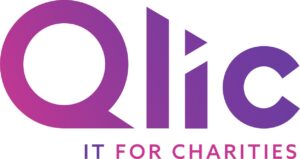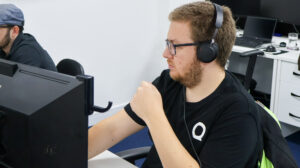
When charities consider new IT investments, the first question frequently asked is: “What’s the return on investment (ROI) of this IT project?” It’s a reasonable place to start. But while financial returns matter, they’re only part of the picture. The real value of an IT project lies in how it drives your mission forward, helping your team do more, reach further and serve better.
The reality? Many nonprofits use ROI to fix problems, not to create a bigger impact. In fact, a TechImpact survey of over 1,000 charities revealed that 87% ranked operational improvements as exceptionally influential, while programmatic gains lagged far behind. It’s clear: ROI is still being measured in terms of convenience, not contribution to the cause.
However, limiting tech ROI to just operational fixes sells the true power of technology short.
From fundraising platforms to secure storage systems, the right IT infrastructure can enable your charity to work smarter, collaborate better, and scale your efforts sustainably. And when implemented with strategy and purpose, solutions like cloud storage aren’t just practical, they’re transformative.
In this blog, we’ll explore:
- Defining Tech ROI specifically for nonprofit organisations
- How technology can help drive charitable impact beyond financial returns
- Benefits of technology investments for charities
- Real-world case studies of successful charity IT implementations
Take a look at how we help charities build strategic IT projects that go beyond the numbers, and into real-world impact.
What is Tech ROI for Charities?
Tech ROI, short for Technology Return on Investment, is all about recognising whether your digital tools are pulling their weight. For nonprofit organizations, this goes beyond just looking at pounds saved or hours cut off admin tasks. It’s about measuring how well your tech choices support both operational efficiency and the mission you’re here to deliver.
In practical terms, tech ROI compares the benefits gained from a technology investment to the total cost of ownership. These benefits might be financial, like reduced licensing fees, or operational, like better data access for remote teams or better management software. It gives nonprofit leaders a clearer way to justify, plan and prioritise IT improvements.
Here’s what tech ROI helps you do:
- Evaluate and compare different technology solutions before making a commitment
- Choose systems that align with your organisation’s size, structure and strategic goals
- Show trustees or funders how tech spending will achieve clear goals.
- Track how digital tools are improving day-to-day operations, such as fundraising campaigns
- Identify whether a solution is reducing inefficiencies or simply shifting them elsewhere
- Keep your IT strategy aligned with your overall business strategy and long-term objectives
By focusing on both numbers and impact, tech ROI puts you in a stronger position to make decisions that benefit your charity, not just the balance sheet.
The Positive Impact of ROI of Nonprofit Technology
When we talk about tech ROI, it’s easy to focus on numbers, cost savings, quicker admin, or fewer IT issues. But for charities, the real return lies in mission impact. That means using technology not just to work more effectively, but to increase your reach, deepen your services, and drive better outcomes for the communities you support.
Here’s how the right IT investments can deliver far more than financial gains:
- Increased Reach
- Improved Efficiency & Effectiveness
- Enhanced Service Delivery
- Stronger Awareness & Engagement
- Increased Collaboration
- Better Outcomes
Increased Reach
Technology helps charities connect with more people, in more ways, from more places. From virtual events to digital fundraising and remote support, your reach no longer needs to be constrained by geography.
Take your website, for example. It’s more than a digital noticeboard; it’s your online HQ. Whether you’re collecting donations, signing people up for events, sharing stories, or even delivering services directly, your website plays a significant role.
That’s why investing in a modern CMS, strong web design, and ongoing website development isn’t just a nice-to-have, it’s mission-critical.
Improved Efficiency & Effectiveness
Better systems lead to efficient and time-saving processes. From cloud storage to CRM systems and AI solutions, the right digital tools reduce manual work and give teams more time to focus on the things that matter. With centralised data and reliable access, leaders can make decisions based on insight, not speculation.
Enhanced Service Delivery
Whether it’s personalised support, automated follow-ups, or easy access to resources, digital tools improve how services are delivered and experienced. For many beneficiaries, especially those with specific accessibility needs, tech makes support faster, more flexible and more inclusive.

Stronger Awareness & Engagement
Storytelling has always been strong, but when it’s data-driven and delivered through the right channels, it becomes transformational.
With tools like Microsoft’s Fundraising software or even blockchain-based donation platforms, charities can run smarter fundraising campaigns, inspire confidence and build deeper relationships with their donors.
Check out our blog for more information on how blockchain can support charity donations.
Increased Collaboration
Investing in new technology can also enhance collaboration. How? Working together gets easier with the right tech stack. Whether you’re teaming up with volunteers, coordinating with partner organisations, or managing internal teams, collaboration tools like SharePoint and the Microsoft 365 suite make collaboration seamless. This translates to achieving business goals faster.
Better Outcomes
Ultimately, when technology is embedded carefully, it supports every part of your mission, helping you make more informed decisions, offer better support, and achieve greater impact.
Moving Beyond Traditional ROI Metrics
In the charity sector, measuring success purely through financial ROI tells only half the story. While cost-effectiveness matters, it’s not always the best indicator of impact. Technology’s real value lies in how it supports the mission, the people you serve, and the teams delivering that work.
To truly assess the success of an IT project, charities need to think bigger, beyond savings and spreadsheets.
Here are some of the key metrics that offer a more rounded view of tech effectiveness.
- Beneficiary Reach and Engagement
- Operational Efficiency Gains
- Freeing Up Valuable Time
- Data Quality and Insights
- Stakeholder Satisfaction
- Mission Alignment
Beneficiary Reach and Engagement
Look at how many people you’re now able to support, and how often. Has a new CRM allowed you to follow up more frequently? Are more people accessing your services online? Consider customer satisfaction surveys and feedback mechanisms to measure whether engagement is significant, not just more frequent.
Operational Efficiency Gains
One of the most immediate benefits of better IT is that it saves time and reduces administrative headaches. Streamlined workflows and fewer manual errors mean more energy can be directed to where it’s required most.
Freeing Up Valuable Time
Smarter tools, including Artificial Intelligence (AI), can take on recurring or minor tasks, like data entry, scheduling, or form processing, freeing up staff to focus on high-value, human-centred work.
New technologies also boost morale and help retain great people. Tech like cloud computing has the added benefit of making work more inclusive, giving staff and volunteers the flexibility to collaborate from anywhere.
Data Quality and Insights
Accurate, well-organised data isn’t just nice to have, it’s a strategic asset. When systems can generate clear reports and visual dashboards, leaders can make decisions based on evidence, not assumptions. New tools like Microsoft Copilot and Copilot Studio are opening the door to smarter, faster data analysis for charities of all sizes, supporting their fundraising efforts.
Stakeholder Satisfaction
Your charity IT strategy should make life easier not just for your staff, but for volunteers, donors, and beneficiaries too. Are people finding it easier to connect with your charity? Are digital forms, communications, and services accessible and user-friendly? These are important signals of success.
Mission Alignment
Perhaps most importantly, ask yourself: does this technology move us nearer to our strategic goals? Every tech investment should support your wider purpose, whether that’s organising more fundraising events, strengthening partnerships, or delivering services more equitably.
By shifting the focus from money to purpose, you’ll be in a far better position to judge whether an IT project is truly worth it.
Examples of How IT Projects Amplify Charitable Impact
Seeing impact in action is the best way to understand the true value of nonprofit technology. At Qlic, we’ve worked with charities across the UK to implement IT solutions that do more than just improve operations, they directly support the people and purpose behind the organisation.
Here are a few examples of how IT projects helped charities go further:
Age UK Oldham
By upgrading their ageing IT infrastructure, Age UK Oldham secured more than just faster systems. We implemented a complete refresh of their hardware and moved their business operations into a cloud environment, giving staff the ability to work securely and flexibly, vital for delivering community-based support.
The result? Decreased downtime, improved staff satisfaction, and a better-connected team able to deliver services effectively across the borough.
Read the Age UK Oldham full case study
Healthwatch Stockport
Healthwatch Stockport, an independent organisation dedicated to advocating for local residents’ views on health and social care services, needed to replace their slow and outdated system. Their existing solution led to poor productivity, frequent delays in accessing essential files and applications.
We helped them migrate shared file storage to SharePoint to enable more efficient and secure access to documents and implement Microsoft Entra ID and Intune for better device management.
This project didn’t just increase day-to-day productivity, it made it easier for the team to engage with the public, manage data securely, and produce timely reports for local health partners. It’s a great example of how the right tech can improve both internal business processes and external impact.
Beacon Family Services
Beacon needed a scalable IT system to support their efforts in providing help and resources to families in need. Our work involved upgrading their server environment by:
- migrating them to Microsoft 365 SharePoint Online and Exchange Online for unified file sharing and email
- enrolling devices in Microsoft Intune for centralised management
This comprehensive approach, combined with ongoing IT support, resulted in enhanced productivity, improved security, a scalable IT environment and reduced IT burden on the CEO and charity staff who could focus more time on supporting families, and less on solving IT issues.
Read the Beacon Family full case study
These stories show that when technology is implemented with a charity’s goals in mind, the impact reaches far beyond IT, it supports mission delivery, boosts morale, and builds capacity for future growth.
Final Thoughts
While the numbers are important, the real tech ROI for charities isn’t just financial, it’s functional, strategic, and deeply mission-driven. Technology, when implemented with purpose, helps charities do what they do best: support people, change lives, and create lasting impact.
We’ve explored how better IT can expand your reach, improve service delivery, increase collaboration, and free up valuable time. And while measuring the ROI of nonprofit technology is helpful, charities gain even more clarity by looking at outcomes like beneficiary engagement, operational efficiency, and mission alignment.
The way to unlock this value is through a clear, future-focused IT roadmap. With the right plan in place, your charity can identify where technology will make the greatest difference and how to measure its success.
Would your charity like to learn more about tech ROI and how IT projects can help maximise your efforts? Get in touch with the team at Qlic Here.




